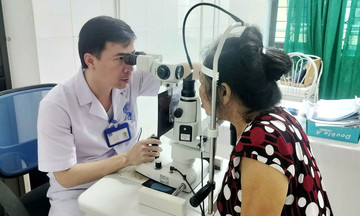Answer:
Each individual is unique, with varying medical conditions, joint structures, and sizes. Therefore, there's no single "best" artificial knee, only the most suitable one. The top priority is using a prosthesis that closely matches the patient's anatomy, ensuring the most natural restoration of activity after surgery.
 |
Doctor Thanh explains knee joint structure to a patient. Photo illustration: Tam Anh General Clinic, District 7 |
A typical artificial knee has 3 to 4 main components:
The femoral component (replacing the lower end of the femur) and the tibial tray (replacing the top of the tibia) are usually made of cobalt-chromium (Co-Cr) alloy or titanium. These special medical-grade metals are strong, corrosion-resistant, and biocompatible, minimizing the risk of allergies or inflammatory reactions.
The insert, a cushion between the metal components, is typically made of ultra-high-molecular-weight polyethylene (UHMWPE). This medical-grade plastic is highly wear-resistant, allowing the joint surfaces to glide smoothly for many years.
The patellar component (which may or may not be included, depending on the surgery) is usually made of polyethylene.
Modern artificial knees utilize advanced medical-grade metals and durable polyethylene, ensuring safety, load-bearing capacity, and longevity.
Depending on your specific condition, your doctor may recommend various types of prostheses, such as medial pivot or ultra-congruent knees. These designs closely mimic the natural joint, enhancing range of motion and rotation. This allows patients to regain pre-disease mobility and flexibility after surgery.
MSc. MD. Specialist Level I Le Nhat Thanh
Orthopedic Trauma Unit
Tam Anh General Clinic, District 7
| Readers can submit questions about musculoskeletal diseases here for doctor's answers. |












